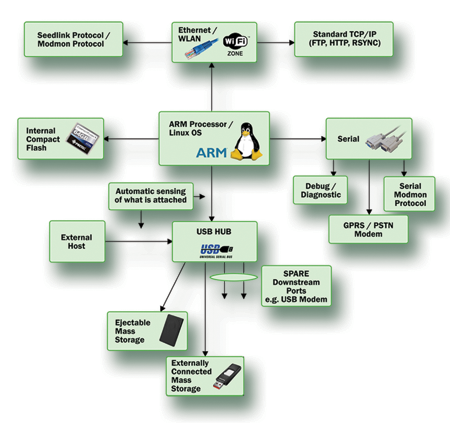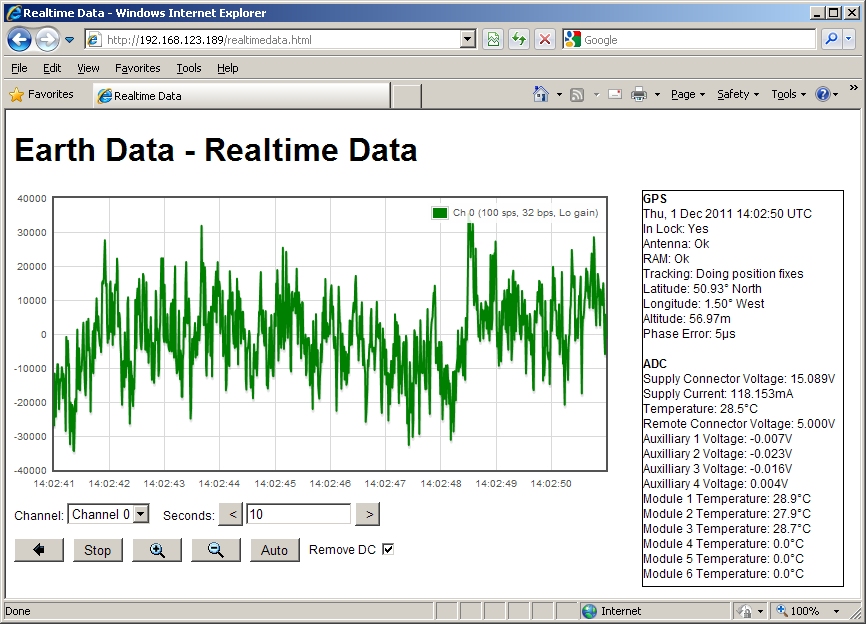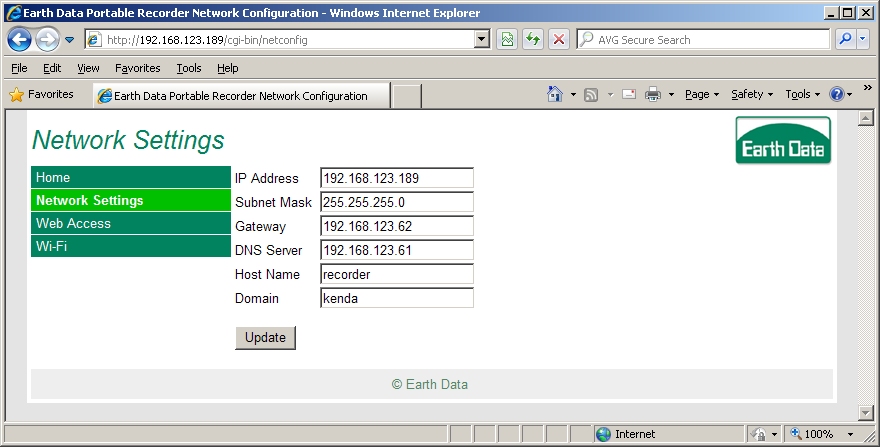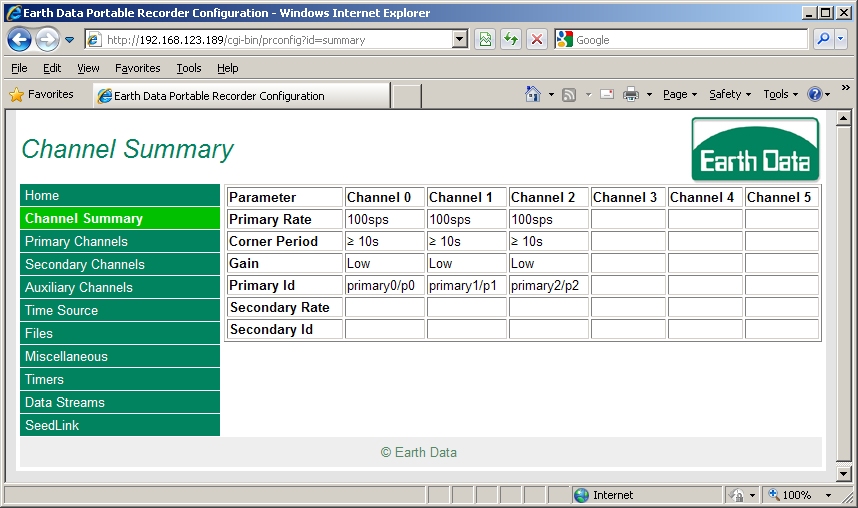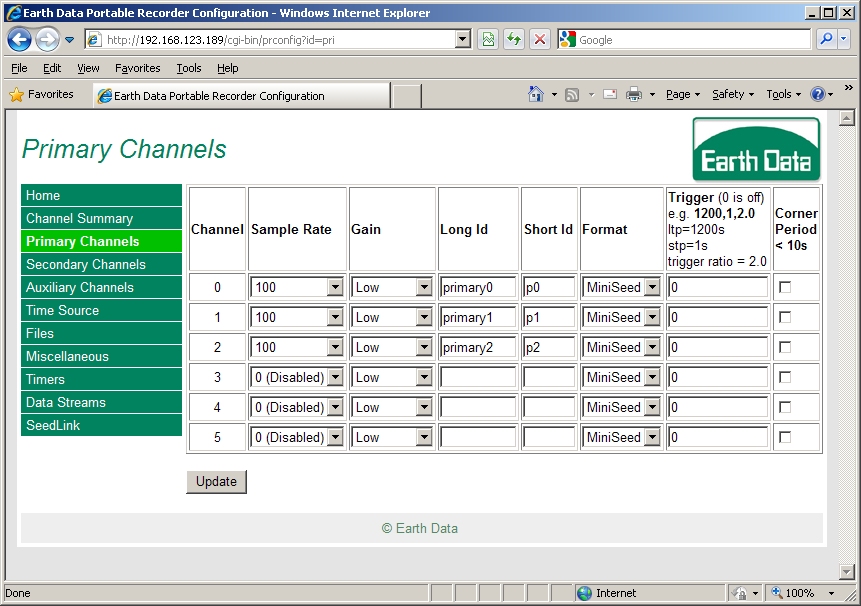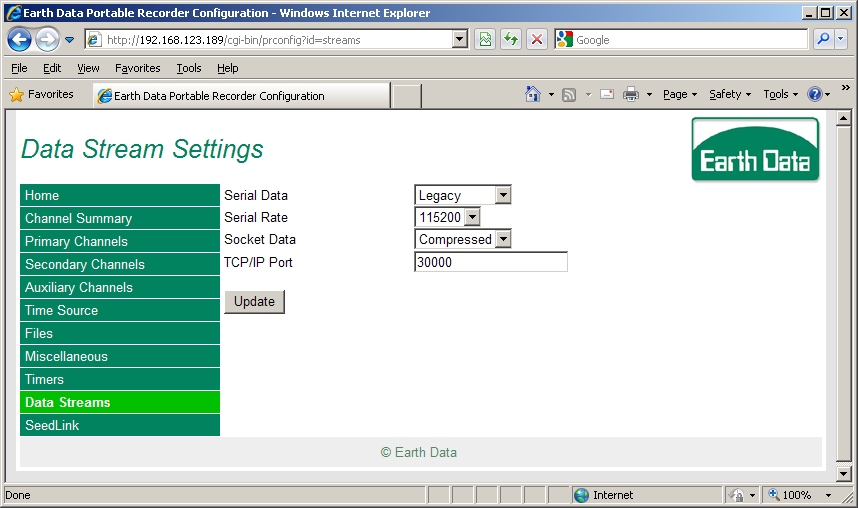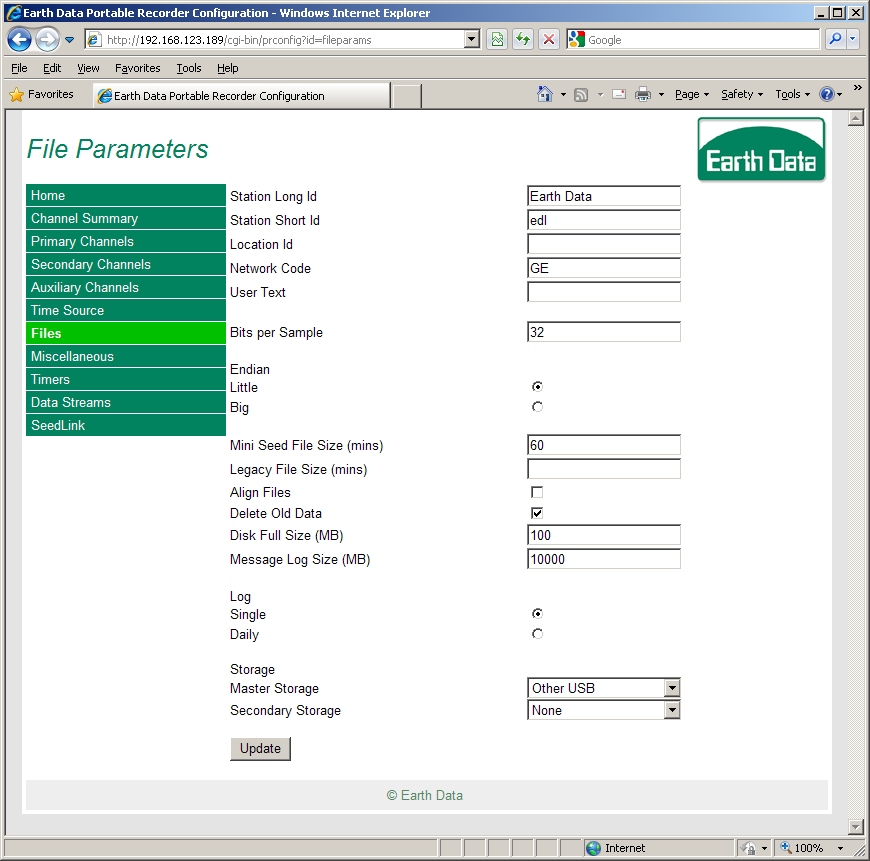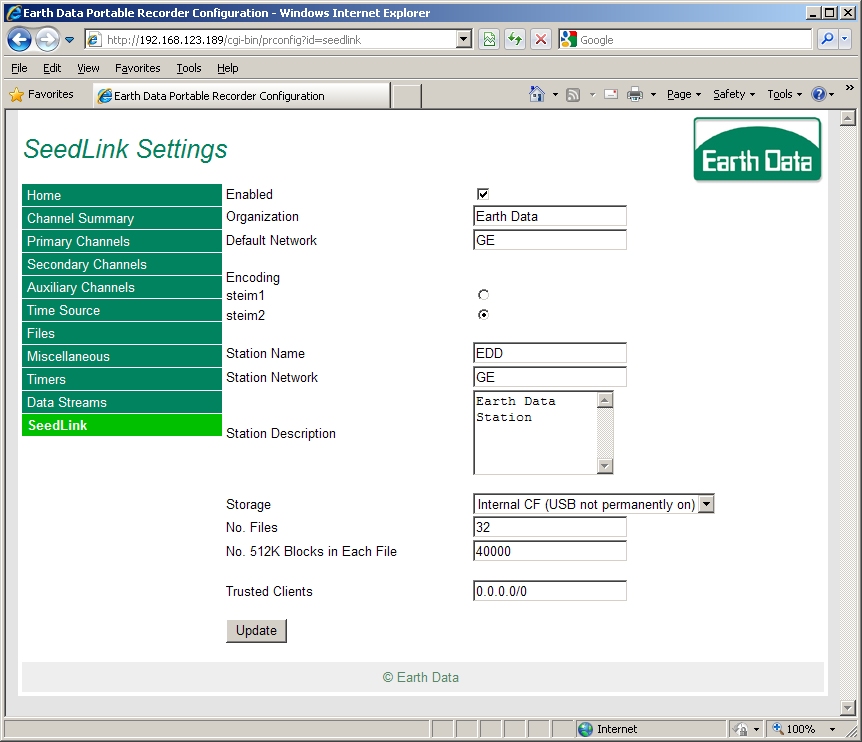Product description
The EDR-210 Portable Field Recorder provides three or six independent channels of extremely high dynamic range at rates of 1 to 3,000 Hz. A selectable conversion word size of up to 32-bits is available for fully representing the high dynamic range.
SIGNAL TO NOISE
A signal to noise ratio of typically 142 dB is achieved at a sample rate of 100 Hz falling to 125 dB at 1,000 Hz using a 24-bit word. 150 dB is obtained below 10 Hz when a 32-bit word size is selected.
The signal bandwidth is always d.c. to 0.4 of the selected sample rate (± 0.1 dB) with over 140 dB of rejection above the half sampling frequency negating any requirement for anti-alias filtering.
SIGNAL INPUTS
Three or six channels of fully differential high resolution inputs are available. Common mode rejection is better than 100dB. One of four sensitivity settings can be selected. Up to ± 20 volts can be accommodated on the least sensitive setting, with one bit representing 20nV on the most sensitive setting. Eight additional low resolution channels can be recorded at low sample rate for monitoring external parameters on the three channel version, dropping to four on six channel units.
CONVERTERS
The converters use a 7th order Delta Sigma technique developed by Earth Data. In addition to their high dynamic range they are also free from spurious tones and artefacts present in alternative designs.
TIMING
The unit can be operated using one of three GPS modes. The default, which can be used if there is a clear view of the sky, employs the internal antenna. Alternatively, an external antenna can be attached and sited up to 20 metres from the EDR-210. In extreme cases a remote GPS unit can be attached, which can be up to 1km from the EDR-210. Power cycling can be used in all three modes for additional power saving. Alternative time sources, such as NTP time servers can be used.
STATUS
Power supply voltage, current and internal temperatures are continuously monitored and reported.
CONNECTION & INTERFACES
The EDR-210 can be configured and monitored via any standard HTTP web browser. In addition, it can also be configured as a SeedLink server enabling communication with external seismic systems. The internal mass storage media can be employed to store data in Mini-SEED format, or alternatively external mass storage units can be directly connected via USB. The unit supports the FTP and RSYNC protocols should remote users wish to download / synchronize any stored data files.
ENVIRONMENTAL
The EDR-210 is housed in a moulded ABS enclosure. Operating temperature range is -20°C to +60°C.
GENERAL
No. of channels
3 or 6 differential input
Input impedance
1 MΩ (any input to ground)
Input CMRR
Better than -100 dB
Number of gain ranges
4 (very low gain; low gain; high gain; very high gain)
Input sensitivity
20 nV, 100 nV, 1 µV or 2.5 µV per bit (24-bit word size)
Input range
±0.16 V, ±0.8 V, ±8 V, ±20 V user programmable
Gain accuracy
Within 0.1 dB after auto-calibration
D.C. offset
±5 µV low gain and very low gain; ±1 µV high gain and very high gain
Crosstalk
Better than -120 dB
A TO D CONVERTERS
Number of A to D converters
3 or 6 (one per channel)
Type
Earth Data proprietary Delta Sigma Converter
Sampling frequency
192 kHz
Alias protection
Spurious in band signals better than -120 dB as a result of any frequency above the passband and any amplitude up to full scale
Primary sample rates
1, 2, 4, 5, 10, 20, 25, 40, 50, 75, 100, 120, 125, 150, 200, 250, 300, 375, 500, 600, 750, 1000, 3000
Secondary sample rates
As above (3 channel unit); Sub-division of primary rate (6 channel unit)
RMS to RMS noise
150 dB below 10 Hz
140 dB below 100 Hz
125 dB below 1000 Hz
Analogue response
d.c. to 0.4 of selected sample rate
Spurious tones
Nothing above -160 dB (input short circuit)
Intermodulation products
Less than -120 dB for any two sine wave frequencies within the passband at half full scale amplitude
Timing accuracy
Better than ±10 µs (GPS locked)
Sensor power
12 V ±0.2 V available on input connector. (100 mA current limited)
AUXILLARY INPUT CHANNELS
Number of channels
4 (six channel units); 8 (three channel units)
Type of conversion
Multiplexed successive approximation; 16 bit
OUTPUT
Available interfaces
Ethernet TCP/IP; RS232; USB
Internal storage
FLASH (allows more than 3 hours history at 100 Hz. Expandable by fitting Internal Compact Flash. Removable SSD in sealed enclosure, 32GB capacity.
ADDITIONAL FEATURES
Digital outputs
One TTL level output; One open collector to 50 V
GPS
Internal and/or external options available
ENVIRONMENTAL
Housing
Moulded glass loaded ABS
Water proofing
Moulded glass loaded ABS
Operating temperature
-20 to +60 °C
Storage temperature
-40 to +80 °C
POWER REQUIREMENTS
Supply voltage range
10.5 V to 28 V
Power consumption
800 mW (no comms 3 channel unit); 1.2 W (ethernet, 3 channel unit); 1.5 W (ethernet and USB. 3 channel unit)
SIZE AND WEIGHT
Dimensions
Length 230mm; Width 100mm; Height 150mm
Interfaces
Serial
(Diagnostic Debug port, Modmon protocol port, GPRS/PSTN Modem)
Ethernet
(runs as a HTTP, FTP server, has RSYNC support, SeedLink protocol)
Optional WLAN
(can be bridged with ethernet IP address)
USB Hub: 4 downstream, 2 upstream
(enables any inserted media to be connected directly to Host for direct download without being removed)
Storage
- Media connection is USB2
- Can be inserted into any slot
- Support for externally connected media
- Media can be swapped out and downloaded onto a host PC
- (alternatively external Host can connect directly to media for download without the need for being removed)
- Supported Media: FLASH Media, HDD, SSD (HDD - Hard Disk Drive, SSD - Solid State Disk)
- Media determined by experiment conditions & capacity requirements
- Data stored in Mini-SEED format
- Configurable file lengths
EDR-210 Portable Recorder
Utilities & Updates
This content is only for Registered users!
